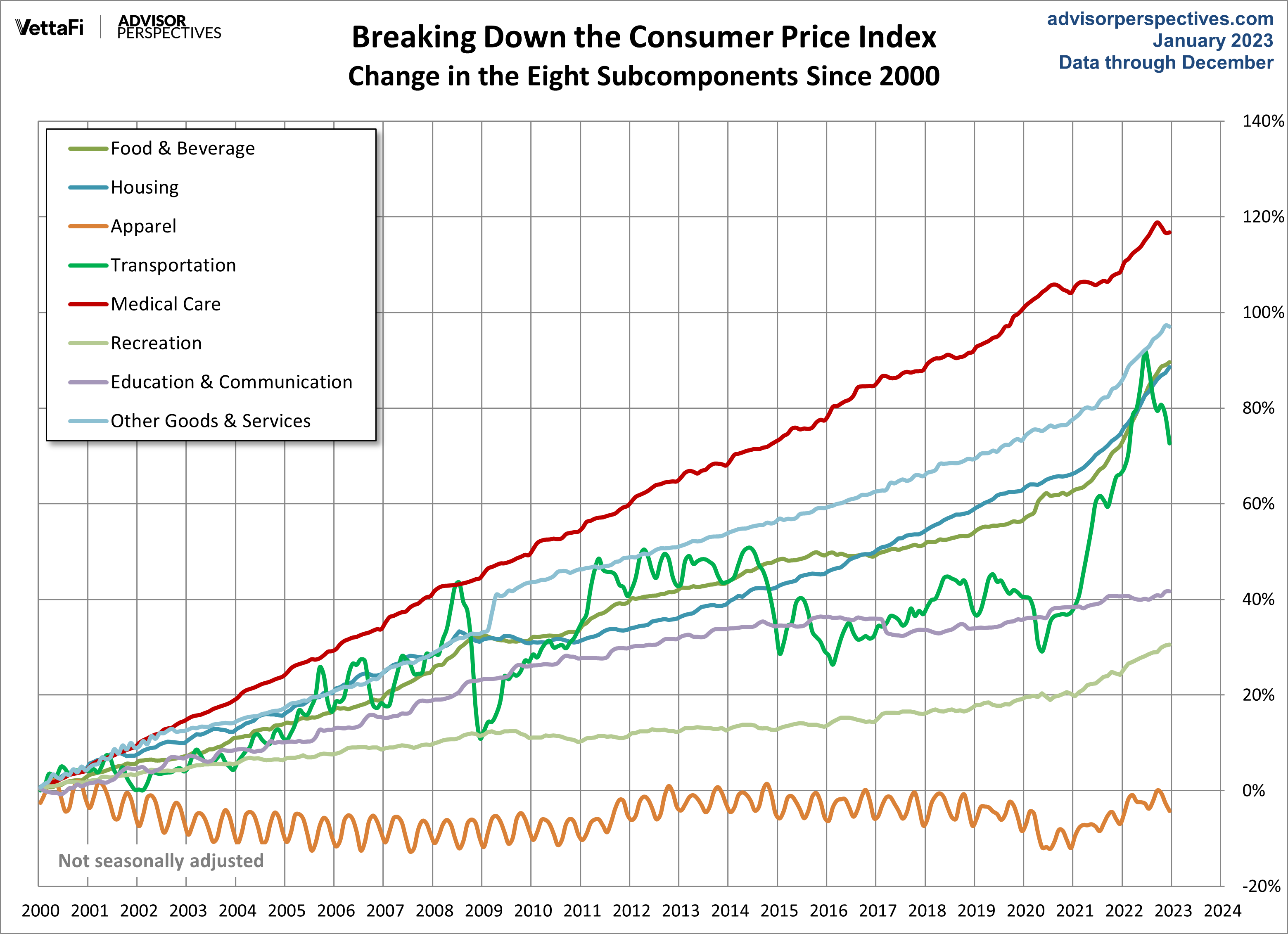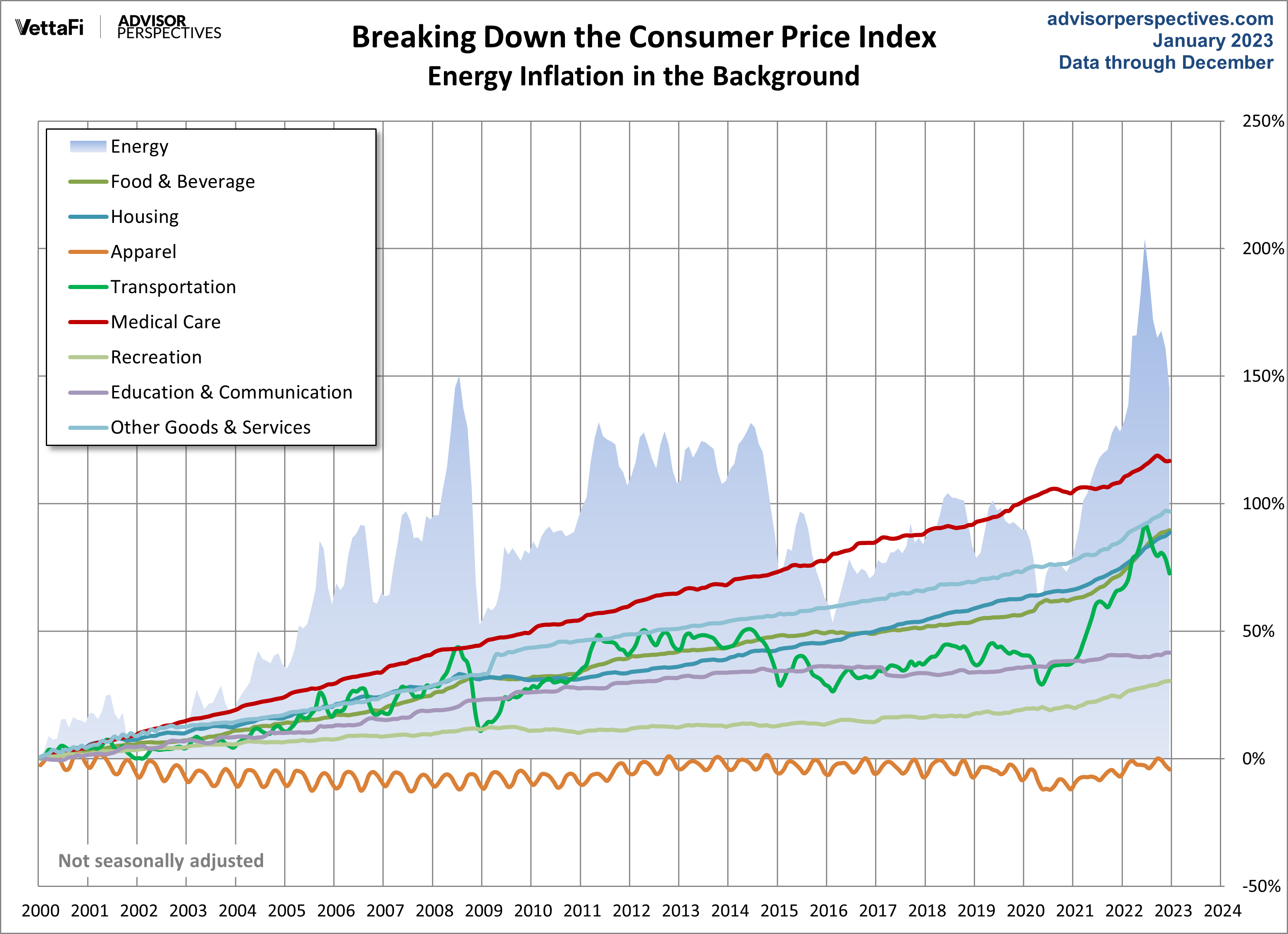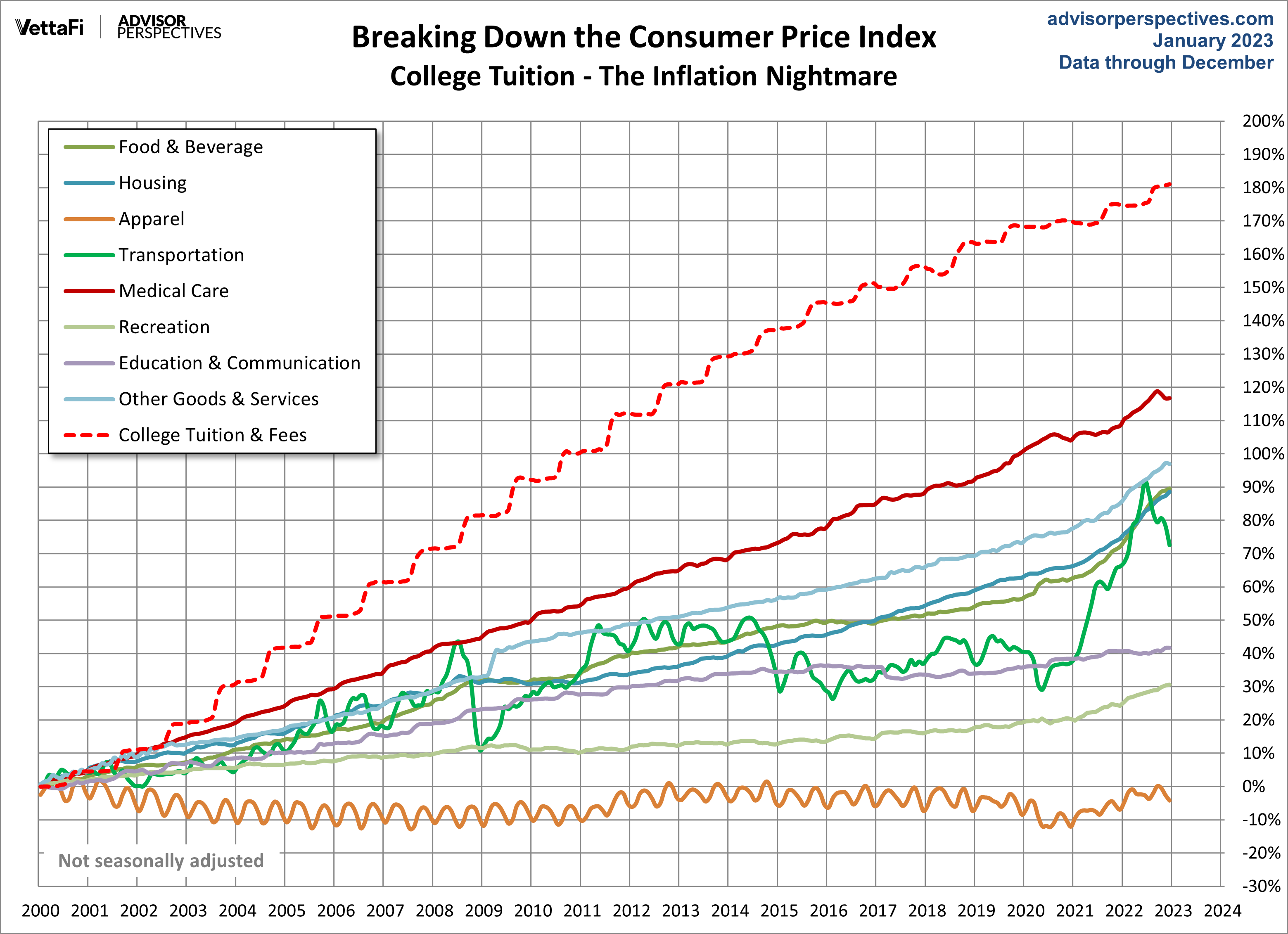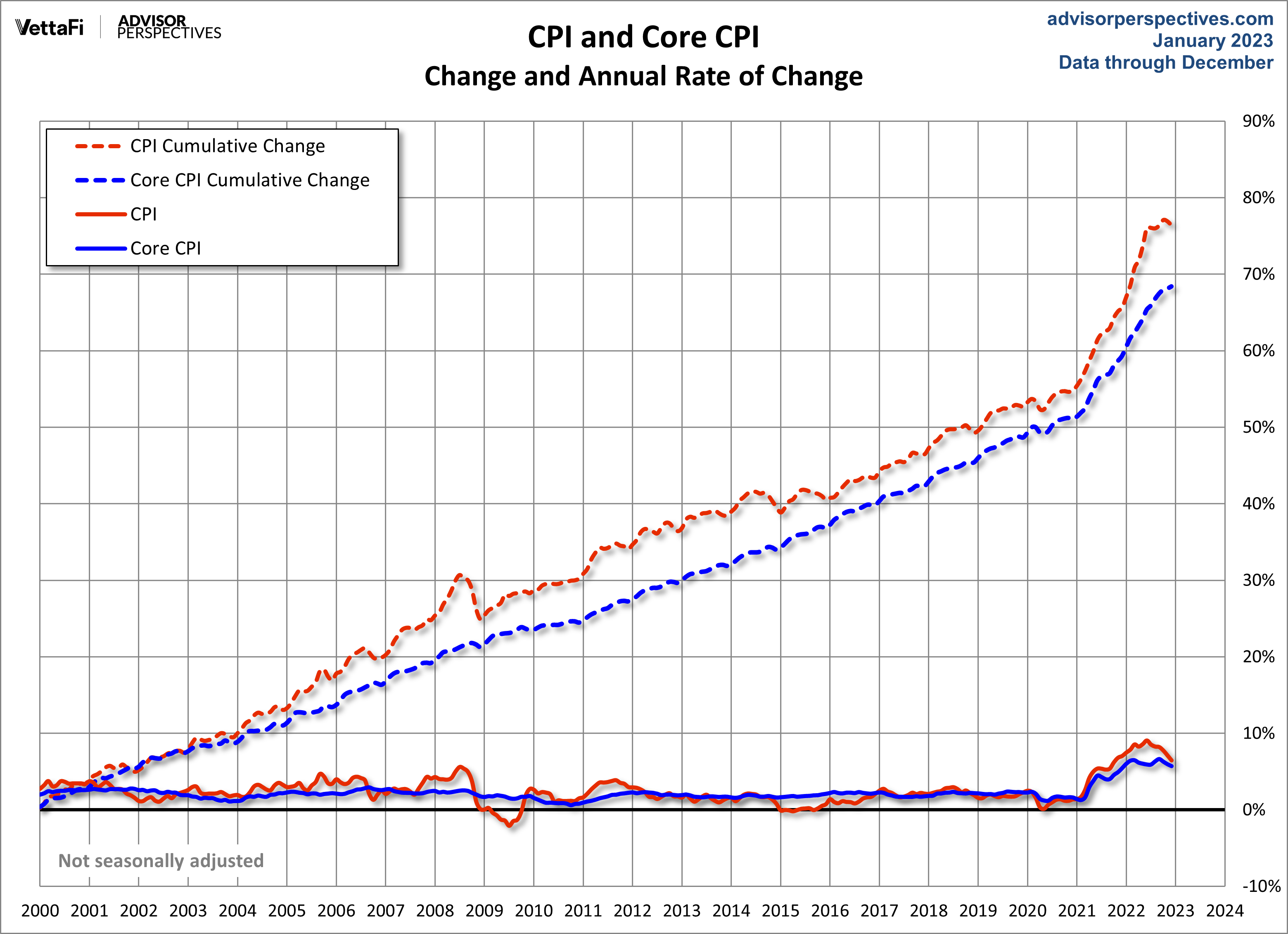Components Of The CPI: December
Note: The charts in this commentary have been updated to include the recent Consumer Price Index news release.

Image Source: Pexels
Back in 2010, the Fed justified its aggressive monetary policy "to promote a stronger pace of economic recovery and to help ensure that inflation, over time, is at levels consistent with its mandate." In effect, the Fed has been trying to increase inflation, operating at the macro level.
More recently, in August of 2020, Fed Chairman Jerome Powell introduced a policy that not only allows for a level above 2%, but welcomes it. But what does inflation mean at the micro level — specifically to your household?
Let's do some analysis of the Consumer Price Index, the best-known measure of inflation. The Bureau of Labor Statistics (BLS) divides all expenditures into eight categories and assigns a relative size to each. The pie chart below illustrates the components of the Consumer Price Index for Urban Consumers, the CPI-U, which we'll refer to hereafter as the CPI. The BLS weights these annually.
The slices are listed in the order used by the BLS in their tables, not the relative size. The first three follow the traditional order of urgency: food, shelter, and clothing. Transportation comes before Medical Care, and Recreation precedes the lumped category of Education and Communication.
Other Goods and Services refers to a bizarre grab-bag of odd fellows, including tobacco, cosmetics, financial services, and funeral expenses. For a complete breakdown and relative weights of all the subcategories of the eight categories, here is a useful link.
The chart below shows the cumulative percent change in price for each of the eight categories since 2000.
Not surprisingly, Medical Care has been the fastest-growing category. At the opposite end, Apparel deflated since 2000. Another unique feature of Apparel is the obvious seasonal volatility of the contour.
Transportation is the other category with high volatility — much more dramatic and irregular than the seasonality of Apparel. Transportation includes a wide range of subcategories. The volatility is largely driven by the Motor Fuel subcategory. For a closer look at gasoline, see this chart in our weekly gasoline update.
The Ominous Shadow Category of Energy
The BLS does not lump energy costs into an expenditure category. Instead, it includes energy subcategories in Housing in addition to the fuel subcategory in Transportation. Also, energy costs are indirectly reflected in expenditure changes for goods and services across the CPI.
The BLS does track Energy as a separate aggregate index, which in recent years has been assigned a relative importance of 7.348 out of 100. In other words, Uncle Sam calculates inflation on the assumption that energ,y in one form or another, constitutes 7.3% of total expenditures, while 3.8% goes to transportation fuels — mostly gasoline (this is included in the "Transportation" category).
The next chart overlays the highly volatile Energy aggregate on top of the eight expenditure categories. We can immediately see the impact of energy costs on transportation.
The next chart will come as no surprise to families footing the bill for college tuition. Here, we've separately plotted the College Tuition and Fees subcategory of the Education and Communication expenditure category. Note that the steady staircase in this cost matches the annual cost increases in late summer for each academic year.
The tuition series in the chart above, however, is overly dramatic. The BLS calculates tuition based on the sticker price, which is higher than many, if not most, households pay.
A New York Times piece, "How the Government Exaggerates the Cost of College," explains that the government data ignores financial-aid grants which substantially lowers the real cost to consumers. For a more accurate view on college tuition, see the statistics at the College Board website.
Core Inflation
Economists and policymakers (e.g., the Federal Reserve) pay close attention to Core Inflation, which is the overall inflation rate excluding Food and Energy.
Now this is a somewhat peculiar metric in that one of the exclusions, Energy, is an aggregate that combines specific pieces of two consumption categories: 1) Transportation fuels and 2) Housing fuels, gas, and electricity. The other, Food, is a major part of the Food and Beverage category. Note that "beverage" for the BLS means alcoholic beverages. So coffee and Coca-Colas are excluded from Core Inflation, but Budweiser and Jack Daniels aren't.
The next chart shows us the annualized rate of change (solid lines) and the cumulative change (dotted lines) in CPI and Core CPI since 2000.
Consumers, especially those who've managed expenses over several years, are most closely attuned to the top line.
Inflation and Your Household
The universal response is to moan over price increases and take delight when prices are cheaper. But in reality, households vary dramatically in the impact that inflation has upon them.
When gasoline prices skyrocket, a two-earner suburban family with long car commutes suffers far more than the metro family with short subway commutes or retirees with no commute. And the pain is even more extreme for low-income households whose grocery money shrinks when gas prices rise. And remember, Uncle Sam excludes energy costs from Core Inflation.
Households with high medical costs are significantly more vulnerable than comparable households with low expenses in this category.
The BLS weights College Tuition and Fees at 1.569% of the total expenditures. But for households with college-bound children, the relentless growth of tuition and fees can cripple budgets. Often those costs get bundled into loans that saddle degree recipients with exorbitant debt burdens.
Of course, the Federal Reserve would point out that the right dose of Core Inflation (extended of course to wages) would enable debt-burdened college grads to pay down their loans with inflated dollars.
Which brings us back to the Fed's efforts to manage the level of Core Inflation. At the macro level, the Fed can doubtless make a theoretical case for manipulating inflation, but have they been successful?
One thing we can be certain about is this: Inflation volatility has a painful effect on lower-income households, those on fixed incomes, those with higher ratios of tuition, transportation, or medical costs -- and all households whose discretionary spending is more dream than reality.
More By This Author:
S&P 500 Snapshot: A Climbing WeekDecember Inflation: The Components
Michigan Consumer Sentiment Up 8% In January, Beats Forecast
Disclosure: This article was originally written by Doug Short. From 2016-2022, it was improved upon and updated by Jill Mislinski. Starting in January 2023, AP Charts pages will be maintained by ...
more







